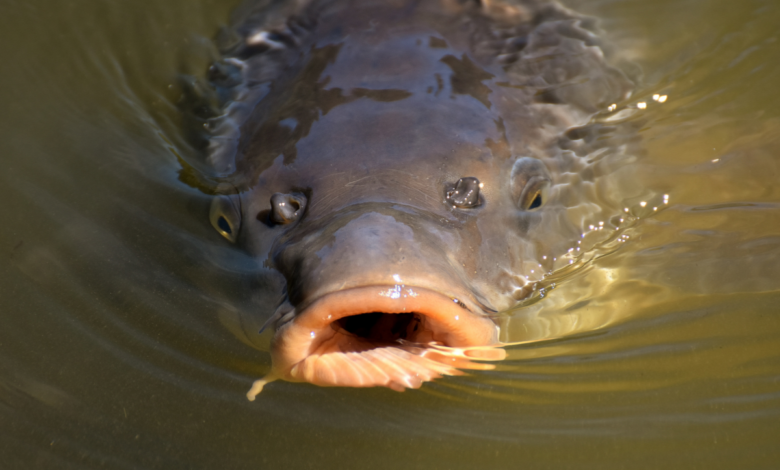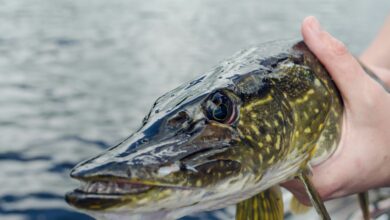How to Catch Catfish: Top Tips for Pullin’ Whiskered Warriors

Hey there, friends! If you’re anything like me, you know that catfishing is one of the most popular and rewarding types of fishing out there.
These whisker-faced warriors can grow to massive sizes, fight like heck, and taste delicious to boot! Best of all, you can find ’em in just about every state in the country.
So, whether you’re a seasoned pro or a newbie looking to get in on the action, stick with me, and I’ll share some of my best tips and tricks for catching catfish.
Know Your Catfish Species
First things first, let’s talk about the different kinds of catfish you might encounter on your fishing adventures:
Chnanel Catfish: These guys are the most common species, usually weighing between 2-4 pounds, but I’ve seen some real lunkers that pushed 40 or even 50 pounds! You can find channel cats in all sorts of water bodies, and they’ll chow down on just about anything, from nightcrawlers to hot dogs.
Flathead Catfish: If you’re looking for a real battle, keep an eye out for flatheads. These aggressive predators can top 100 pounds, and they love to hang out in medium to large rivers and reservoirs. Live bait, like sunfish or creek chubs, is the key to landing these beasts.
Blue Catfish: The big daddy of the catfish world, blues can reach a whopping 150 pounds! They’re most common in the southern U.S. and tend to feed higher in the water column. Fresh cut bait, like shad or skipjack, is your best bet for enticing these giants.
Check out the folks over at Kapper Outdoors reeling a big channel catfish in from a stocked pond:
Best Catfish Setup: Choosing the Gear
Now that you know what you’re after, let’s talk about the best catfish rig setup:
Rods, Reels, and Line: For smaller cats, I recommend a 2500 size spinning reel, a 6-6.6″ medium-heavy rod, and 15-pound braided line. If you’re targeting bigger fish, bump up to a 4000 size reel, a 7′-8′ “big game” rod, and 30-pound. Of course, as the fish get bigger, so should your line. But it’s unlikely you’ll need anything bigger than 30-pound test for catfish.
Hooks, Sinkers, and Other Tackle: Circle hooks in sizes 3-8 are my go-to for catfishing. Make sure you have a variety of egg sinkers (up to 1 ounce) and no-roll sinkers (3+ ounces) on hand, as well as some floats for fishing around weeds, timber, or when drifting your bait. Don’t forget the barrel swivels and plastic beads, too!
How to Catch Catfish: Catfishing Techniques
Let’s be real, catching catfish was never meant to be hard. Some of the techniques used to catch them are as simple as just dumping something stinky in the water. Let’s talk about it:
Still Fishing
The first is technique still fishing, which involves casting out your bait, setting your rod in a holder, and waiting for a big ol’ cat to come along and take a bite. It’s exactly what it sounds like.
This is where patience really pays off – sometimes you might have to wait a while, but trust me, when that rod tip starts bouncing, it’s all worth it!
Drifting
Another technique I love is drift fishing. This is where you let your bait drift naturally with the current, which can be a great way to cover a lot of water and find active fish.
I like to use a slip sinker rig for this, with a heavy enough weight to keep my bait down near the bottom where the cats like to hang out. If I’m fishing in shallower water or around a lot of snags, I might switch to a float rig instead, which suspends the bait off the bottom and helps keep it out of trouble.
Best Way to Catch Catfish: Bait Selection
When it comes to catfish bait, you’ve got plenty of options. Catfish aren’t too picky about their bait but I primarily recommend hitting them with live bait:
Live Bait: Minnows, sunfish, creek chubs, bullhead catfish, and nightcrawlers are all top-notch choices, especially for flatheads. Just make sure you have a livewell or aerated container to keep your bait frisky.
Cut Bait: If you don’t want to deal with live bait, chunks of gizzard shad or skipjack are the way to go. Fresh is always better than frozen, but if you’re in a pinch, those stink baits made from fermented cut bait can work wonders.
Grocery Store Baits: Believe it or not, you can catch plenty of catfish on stuff you might find in your fridge, like chicken livers, hot dogs, cheese, doughballs, frozen shrimp, and even canned corn. Some folks even swear by homemade concoctions that combine cut bait with grocery store staples.
Some of the best catfish baiting tips I’ve ever gotten were from guys who would literally let old fish, meat, and whatever else they could sit out in a bucket in their backyard.
This stuff smelled so bad but it always attracts catfish.
Finding the Right Spots
Of course, even the best bait won’t do you much good if you’re not fishing where the cats are. Here’s what to look for:
Rivers and Creeks: Deep holes next to shallow areas are catfish magnets. Keep an eye out for eddies, foam lines, river bends, cut banks, and areas under bridges, locks, and dams. Confluence areas, where tributaries meet, are also prime spots.
Lakes and Reservoirs: Focus on weed edges and mudflats near deeper water in lakes, submerged creek channels, brush piles, rock piles, stump fields, laydowns, and coves. Fishing maps and electronics can be a huge help in locating these structures.
Best Times and Weather Conditions
As for the best times to catch catfish, dawn and dusk are always reliable, but don’t overlook the potential of night fishing. Catfish often move into shallower areas after dark to feed, so if you don’t mind burning the midnight oil, you could be in for some serious action.
Don’t let the weather discourage you – I’ve caught cats in just about every condition imaginable, from scorching summer days to frigid winter nights.
Seek Local Knowledge
One of the best things about catfishing is the sense of community among anglers. Don’t be shy about asking for advice from folks who know the area well.
Chances are, if you have a family member, friend, co-worker, or neighbor who loves to catfish, they’ll be more than happy to share some tips and maybe even take you out for a day on the water.
If not, strike up a conversation with other anglers at your local fishing spot, join a Facebook group or online forum dedicated to catfishing in your region, and soak up all the knowledge you can. Just remember to be courteous and respectful when seeking advice.
Patience and Persistence
At the end of the day, catching catfish is all about patience and persistence. Unlike some other types of fishing, catfishing often involves a lot of waiting around, so embrace the slower pace and enjoy your surroundings.
Bring a good book, crack open a cold one (if you’re of age, of course), or just sit back and shoot the breeze with your fishing buddies.
When the bite is slow, don’t get discouraged – use the time to enjoy the great outdoors, and remember that every cast is another chance at landing the fish of a lifetime.
Conclusion
Well, there you have it, folks – my top tips and tricks for catching catfish. Remember, success in catfishing comes down to a combination of knowledge, determination, experience, and a willingness to learn from your mistakes.
The more time you spend on the water, the better you’ll get, so don’t be afraid to experiment with different tactics and techniques until you find what works best for you.
Most importantly, have fun out there! There’s nothing quite like the thrill of doing battle with a big, ornery catfish, and I promise you, once you get a taste of it, you’ll be hooked for life. So what are you waiting for? Grab your gear, round up some friends, and get ready to experience the joys of catfishing for yourself!



